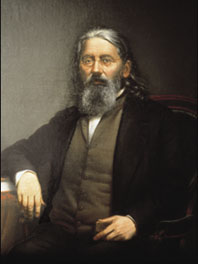Homeopathy Masters
Dr. Constantine Hering, MD
(1800-1880, US)
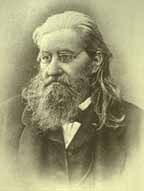
Dr. Constantine Hering, MD, the “father” of American homeopathy and one of the Homeopathy Masters, was born on January 1, 1800 in the the town of Oschatz within the electorate of Saxony (now in Eastern Germany). He grew up in a religious household. In 1817 he attended the Surgical Academy of Dresden for three years and from 1820 he studied medicine at Leipzig University.
While at Leipzig he was the student-assistant of a Dr Robbi, an antagonist of homoeopathy. Robbi was approached by a local publisher to write a book about the homoeopathic “heresy” but referred the publisher to Hering because of his own lack of time. Hering enthusiastically pursued this task, studying the writings of Hahnemann, repeating provings, and undertaking other practical experiments as part of his research. During this period, Hering received a dissecting wound that became inflamed and infected. He was advised to have his hand amputated but sought homoeopathic treatment and recovered. As a result of the evidence from his own investigations, Hering transferred his allegiance. But instead of writing the negative review, he immediately quit the job and left the University to become one of the most influential proponents of homeopathy of all time. Hering graduated from the University of Liepzig (in 1826). In his doctoral thesis titled, “On the Medicine of the Future”, Hering declared himself to be a homeopath.
In the years of 1827-1833, Hering was sent to Paramaribo, Surinam by his King (of Saxony) where he conducted Zoological and Botanical research for his government. Soon after, the King attempted to prevent Hering from publishing his prolific homeopathic findings, but instead, Hering resigned the post and became the Physician-in-Attendance for the governor of Surinam’s capitol, Paramaribo. Hering began focusing his attention on the discovery of new homeopathic remedies, the attenuation’s and freshly quilled-data of which he would send, by sea, to Hahnemann in Paris, and to Stapf, his friend and publisher in Germany.
Hering accidentally proved the remedy Lachesis while he was triturating the Bushmasters venom in his home-laboratory in Paramaribo. He was attempting to find an improved substitute for the cowpox inoculation that Jenner was developing in Britain, which Hering felt was extremely dangerous and very heavy-handed for homeopathy. His interest and experience with snake venom led him to surmise that the saliva of a rabid dog, or powdered smallpox scabs, or any other disease products, viruses, or venom’s, might be prepared in the new Hahnemannian way to give a fail-safe method of curing disease. In this manner Hering unwittingly became the first in the Isopathic movement (eventually, he also unwittingly paralyzed his right side from further self-testing or “prufung” of higher and higher attenuations of Lachesis). Hering stayed in Paramaribo for six years then emigrated to America and settled in Philadelphia in 1833.
In 1848 he chartered the Hahnemann Medical College of Pennslyvania which is still considered to be one of greatest homeopathic teaching institutions of all time (next to Kents Post Graduate School) and devised the Homoeopathic Domestic Kit. There Hering and his students treated over 50,000 patients a year and trained a total of 3500 homeopaths.
Hering began organizing his voluminous notes into his still popular classic The Guiding Symptoms of Our Materia Medica the year before he died, in 1879, and it was completed by his students and published posthumously in 1891.
Hering was the first to use nitroglycerine in medicine for headaches and heart problems (30 years before its first use in orthodox medicine). It is an irony that he himself suddenly died one evening of a heart attack after returning from a house call to a patient. This was on the 23rd June, 1880.
Constantine Hering is widely known as “The Father of American Homeopathy” and was profoundly revered by his contemporaries. His influence extended across the larger part of the USA for the best part of the 19th century with the result that homeopathy flourished in that country for about 70 years. The motto he carried throughout his life was, “The force of gentleness is great.”
Dr. John Martin Honigberger,M.D.
(1795 – 1869)
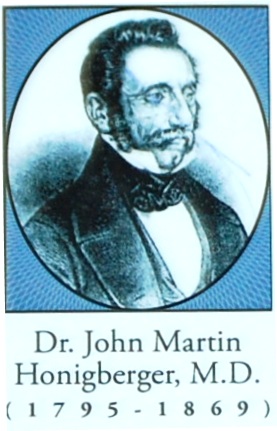
While in Constantinople I found Homeopathy to be the most effective treatment for the plague, I was even able to cure myself using it”
– Dr John Martin Honigberger,M.D.
Dr Honigberger, one of the Homeopathy Masters was born in Romania. After passing his M.D. with distinction, he became a successful practitioner.
In 1835 he traveled to Paris and met Dr. Hahnemann. He bought a large quantity of homeopathic medicines from Hahnemann’s Pharmacist, Lehmann of Kothen.
In 1836 Dr Honigberger went to Vienna and caught an infection of cholera. He saved himself by taking Ipecac every half hour. He was impressed greatly by the results of homeopathic medicine both in himself and others.
He decided to start his practice at Constantinople. He treated cases of plague with Ignatia. He was led to use it because he saw Armenians there wearing a string tied to a bean of Ignatia and it seemed to give them protection where so many people were dying every day. He also treated a case of haemorrhage with Aranea-diadema; this case brought him fame and recognition.
Dr. Honigberger was the first man to introduce the name of Samuel Hahnemann and his healing art to India.
Reference –
Professor Ernest Albert FARRINGTON
(1847-1885, US)
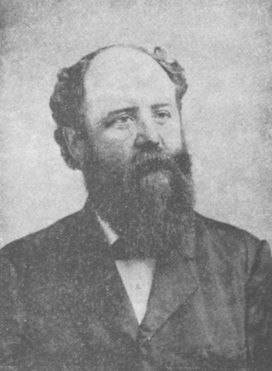
The subject of this sketch, Professor Ernest Albert FARRINGTON, one of the Homeopathy Masters was born January 1, 1847, at Williamsburg, Long Island, N. Y., and died at Philadelphia, December 17, 1885. During his early years his family removed to Philadelphia, at which place he received his education, and rapidly rose to eminence in his profession.
When the Hahnemann Medical College of Philadelphia was chartered, in 1867, it became a question of serious import to him as to Whether he should continue in the College with which he was connected or join the new institution. After lengthened consideration, he decided to sever his relationship with the old College. He became the second matriculant of the Hahnemann Medical College of Philadelphia. Here, again, he won unstinted praise, and graduated March, 1868, having enforced the full conviction upon the minds of all, both Faculty and class, that he had no superior in the class of “68.” To the honor of all, let it be said that envy never tainted the commendation of one; every graduate delighted to accord to him his full meed of praise.
His daily association with Hering quickened this his natural desire, and he was soon recognized by that master spirit of our school as one well fitted to a place in the highest rank among the expounders of that most intricate science, Materia Medica. Hering delighted to say, “When I am gone. Farrington must finish my Materia Medica.”
His labors in this direction were not restricted to simply reviewing old provings, but were rounded out unto fulness by personally supervising provings of both old and new drugs. While he certainly possessed a wonderful memory for symptoms, the most prominent feature of his teaching may nevertheless be said to have been his ability to thoroughly analyze the specific drug action, showing not only the superficial but also the deeper relationship of symptoms.
Family and class relationship of drugs he studied with deepest interest. In fact, his “Studies in Materia Medica,” a few of which have been published in the Hahnemannian Monthly, belong to the classics of our school.
On his election to the chair of Materia Medica, he devoted much of his time to the development of a method which, while full and comprehensive, would at the same time present a simplicity which would enable every student to intelligently study this most difficult subject.
He infused such new life into this usually prosy subject, that it soon became the favorite hour with many, and to all an hour of interest and profit. To the earnest student it became rather a recreation than a task. His analytical mind carried the students through labyrinths of symptoms and mazes of modalities, with such clear and concise directions as to the way, that the thoughtful student might ever after feel able to traverse the same alone.
His writings all bear the impress of a master mind. Already in 1871, scarcely three years subsequent to his graduation, we find him dealing with the philosophical elucidation of drug prescribing, in language indicating depth of knowledge rarely found even among our oldest practitioners. In illustration, permit a short quotation from his report of a case published in the Hahnemannian Monthly, April, 1871.
“It is a singular fact that all of the tribe of Senecionideae, Ord. Compositae which we have proved (Cina, Artem. vulg., Cham., Tanacet., Arnic., Senecio grac.) have relief from some form of motion.
“The Artemisia vulgaris resembles the Cina in nervous troubles, but, as it is in conjunctive, relationship, it can not be used immediately before or after Cina. As a disjunctive relative, and hence one that follows well, Silicea corresponds to the somnambulistic state, and Silicea, Nux vom. and Caust., to the irritation of the solar plexus giving rise to spasm.
Thus we find him, as a beginner in years, treating the Materia Medica as by the hand of a master. The literature of our school has been greatly enriched by his pen; for though he did not strive to gratify ambition in giving to the profession massive volumes, he performed that which he felt duty to demand, i. e., gave of his time in work not only upon his lectures, but also to societies, and in our journal literature.
The American Journal of Homoeopathic Materia Medica, the Hahnemannian Monthly, the North American Journal of Homoeopathy, and other journals, have each received valuable articles from his pen. His Studies in Materia Medica alone, published in the Hahnemannian Monthly, aggregate about two hundred pages, and his comparisons, published as an appendix to the American Journal of Homoeopathic Materia Medica, from 1873 to 1875, embrace over 150 pages more. His other articles were numerous and instructive.
Dr. Farrington was a homoeopathist by conviction. With him it was not a light thing to be a physician, and he could only practice that which he could see to be true. Expediencies, for the sake of gaining the clat of those who, through want of knowledge, grant unstinting praise to pleasant error, had no attraction for him. He preferred to sacrifice and to sustain his own sense of doing right rather than gain financial success by pandering to the ignorance of wealth, where it demanded departure from the law of cure in an experimental treatment of disease.
The influence which such a mind must exert upon a profession cannot be overestimated. Essentially scientific in its bent, progressive in its character, earnest in its labors, logical in its reasonings, and philosophical in its judgments, the results reached even most presistent opponents were compelled to receive with respect. While thus a true and most consistent homoeopath, he necessarily became identified with every movement which might tend toward the advancement of learning. Especially did he desire to see medical education brought to a far higher level than has ever been attained in, this country.
Dr. Farrington was also an active participant in our County Society work. On the floor during debate, he was listened to with that attention which ability only can command. In the Chair, which for three successive years he occupied, he presided with dignity and justive.
He was also a member of the State Society and of the American Institute of Homoeopathy, which latter he joined in 1872. For many years he was a member of its “Committee on Drug Provings,” during which time he was also identified with its Bureau of Materia Medica. At the time of his decease he was chairman of that bureau. In 1884 the Institute appointed him a member of its Editorial Consulting Committee on the new “Cyclopaedia of Drug Pathogenesy,” etc.
In December, 1879, when the Hahnemannian Monthly was purchased by the Hahnemann Club of Philadelphia, he was selected by his colleagues of the Club as the sole editor of the journal, but on account of impairment of health and multiplicity of duties he felt impelled to decline the charge; though later, at the earnest solicitation of the Club, supplemented by that of the General Editor, he accepted the position of Contributing Editor, which position he filled until the time of his death; in fact, his last article, a book review, was written but a few weeks prior to his decease.
Thus we find him throughout his life striving to accomplish the work which he valued so highly. No labor seemed too great, no effort too severe, so long as it tended to promote the advance toward that standard to which he felt the profession should aspire. An earnest advocate of higher education in general, he especially longed for the time when the professional standard should be placed at its highest.
Dr. Henry C. Allen
(1836-1909, US)

Dr. Henry C. Allen, one of the Homeopathy Masters was born [on February 10, 1836] in the village of Nilestown, near London, Ontario, and was the son of Hugh and Martha Billings Allen. On his paternal side, he was a descendant of that distinguished family of Vermonters of the same name, Gen. Ira Allen and Ethan Allen, both famous in the revolution. On his maternal side, the Billings’ were well known among the Colonial families of Massachussetts Bay, and one of them, the great-grand-father of Dr. Allen, owned the farm lands on which the present city of Salem is built. After selling this property, the family moved to Deerfield, in the Connecticut Valley and were there at the time the Indians pillaged and ravaged that part of the country.
He received his early education in the common and grammar schools at London, where he later taught school for a time. His medical education was acquired at the Western Homeopathic College at Cleveland, Ohio (now the Cleveland Homeopathic College), where he graduated in 1861, and later from the College of Physicians and Surgeons of Canada. Shortly after graduation, he entered the Union Army, serving as a surgeon under General Grant.
After the war he was offered and accepted the professorship on Anatomy in his Alma Mater at Cleveland, and it was here that he first started practicing medicine. Later he resigned and accepted the same chair in the Hahnemann Medical College of Chicago. In 1868 he was offered the Chair of Surgery to succeed Dr. Beebe, but was unable to accept. He then located in Brantford, Ontario, where on December 24th, 1867, he married Selina Louise Goold, who, with his two children, Franklin Lyman Allen and Helen Marian Allen Aird, survives him.
In 1875 he moved to Detroit, Michigan, and in 1880, being appointed Professor of Materia Medica at the University of Michigan, he moved to Ann Arbor, where he has since resided.
In 1892 he founded the Hering Medical College and Hospital, of which he was Dean and Professor of Materia Medica until his death, January 22nd, 1909.
Dr. Allen was an honorable senior of the American Institute of Homeopathy; a number of the International Hahnemannian Association; of the Illinois Homeopathic Medical Association; of the Englewood Homeopathic Medical Society; of the Regular Homeopathic Medical Society of Chicago; Honorary Vice-President of the Cooper Club of London, England; and Honorary Member of the Michigan, New York, Pennsylvania and Ohio State Medical Societies and Honorary Member of the Homeopathic Society of Calcutta, India.
He was owner and editor of the Medical Advance for many years. Besides writing many articles in this and other magazines he wrote numerous books, among which are the following :
Keynotes of Leading Remedies, lately placed on the Council List of Books for use in the Canadian Medical Colleges;
�The Homeopathic Therapeutics of Intermittent Fever
�The Homeopathic Therapeutics of Fevers
�Therapeutics of Tuberculous Affections
and recently completed the revision of B�nninghausen’s Slip Repertory, which he brought down to date and arranged for rapid and practical work.
This, his latest work, a treatise on the Nosodes, was completed only a short time before his death, and was the result of years of study, experience, and of proving and confirming the symptomatology of many of the nosodes. His observations are here published for the first time.
Note: This biography was written by the son of Henry C., Franklin Lyman Allen. It was issued in the posthumous edited “Materia medica of the nosodes with provings of the X-Ray”, Philadelphia: Boericke & Tafel, 1910.
Dr. Timothy Field ALLEN
(1837-1902, US)
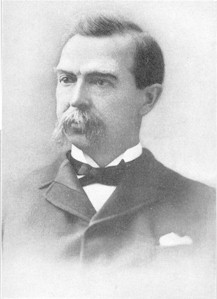
Dr. Timothy Field ALLEN, one of the Homeopathy Masters was born on April 24, 1837, in Westminster, Vermont. Son of a physician, he graduated from Amherst College and gained his medical degree at New York University in 1861. He studied hom�opathy in Brooklyn, New York.
In 1867 he taught Anatomy at the New York Hom�opathic Medical College. He was appointed Professor of Therapeutics and Materia Medica four years later, and then became President for some 11 years (1882-1893). He was co-editor of the US Medical and Surgical Journal from 1867 to 1870, and the New York Journal of Hom�opathy in 1873-74.
He was also Director of a Homoeopathic Insane Asylum in Middletown, New York, which for decades was a centre for the research and treatment of mental disease according to scientific homoeopathic principles.
Over 10 years he compiled the massive Encyclopedia of Pure Materia Medica, 12 Volumes, which was a complete record of all provings done with hom�opathic drugs, and wrote a number of other books as well.
Allen’s two other interests were music and botany. Renowned as an organist and composer, he was also Director of the New York Botanical Gardens.
His son, Paul Allen, graduated from New York Medical College in 1889. He taught Materia Medica at his alma mater and was an active force in New York hom�opathy for more than 40 years.
Dr. James Tyler Kent
(1849-1916, US)
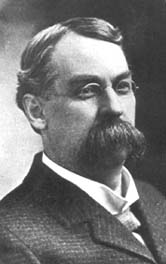
James Tyler Kent, one of the Homeopathy Masters was born in Woodhull, New York, on March 31, 1849. After completing two undergraduate degrees by the age of 21, Kent undertook two postgraduate courses, without graduating, at the Eclectic Medical Institute of Cincinnati, Ohio. At 26 years of age he set up practice as an eclectic physician in St Louis, Missouri and soon became a distinguished member of the Eclectic National Medical Association. He was a staunch Baptist.
In 1928, Kent�s second wife, Lucy, became ill. (Kent�s first wife, Ellen, had died at 19 years of age, shortly after their marriage.) In spite of Lucy�s symptoms of “nervous weakness, insomnia, and anaemia” being treated by both orthodox and eclectic physicians, her condition continued to deteriorate and she was bedridden for months. Under ridicule and opposition from Kent, the hom�opathic physician, Dr Richard Phelan was called in to see Lucy. Following his prescription, she made a dramatic recovery. As a result, Kent elected to study with Phelan and changed his allegiance from eclecticism to hom�opathy. He considered hom�opathy to be the only therapy that was guided by laws and principles and the only one to address the fundamental cause of illness.
He then became a careful student of Hahnemann’s Organon and other works of the new school, with result in his complete conversion to homoeopathy, his resignation from the Eclectic Medical Association in 1879 and his appointment to the chair of Anatomy in the Homoeopathic Medical College of Missouri, which he held from 1881 until 1883, was appointed professor of Materia Medica at the Hom�opathic Medical College of St Louis, Missouri, from 1883 until 1888, became professor of Materia Medica and Dean of the Post-Graduates� School of Hom�opathy at the Hahnemann Medical College (Philadelphia) and occupied the chair of professor of Materia Medica at the Hering Medical College and Hospital, Chicago. During this period, Kent�s second wife died.
Thus for more than thirty-five years Dr. Kent had been a conspicuous figure in medical circles, and for more than twenty-five years in teaching and practice under the law of similia; and he is looked upon as one of the ablest teachers and exponents of the homoeoapthic school in America. His contributions to the literature of the profession are known by their strength rather than their length, and include, more prominently, his “Repertory”, “Homoeoapthic Philosophy” and “Lectures on Materia Medica”. Among the various professional associations of which he was a member, the more prominent of them, were the Illinois State Homoeopathic Medical Society, the American Institute of Homoeopathy and the International Hahnemannian Association, besides which he held a honorary corresponding membership in the British Homoeopathic Medical Society.
Both Lectures on Hom�opathic Philosophy and Lectures on Hom�opathic Materia Medica were compiled by Kent�s students from notes they had taken during class lectures. In 1916, his students insisted he take a holiday. Kent agreed, deciding he would write a “proper” book. Not long after commencing his vacation, his catarrhal bronchitis developed into Brights disease (glomerulonephritis) and he died 2 weeks later, on June 6, 1916 at Stevensville, Montana.
Kent was an avid Swedenborgian and proponent of high potencies (200-c and up), often prescribing the CM and MM potencies and inspiring the “Kentians” with his belief that the homeopath must treat not only the patients physical body, but also the mental/emotional and spiritual elements simultaneously which required using the higher potencies. Kent’s famous Repertory was more systematic and readable than its precursors and is still the popular choice today. Kent developed “pictures” of constitutional types of patients, i.e.: Sulphur as “the ragged philosopher” etc. Later, his pupil, Margaret Tyler, developed this idea further in her book, Homeopathic Drug Pictures, and more recently Mr. Geroge Vithoulkas has developed his own profoundly insightful “essence pictures” along similar lines. The influence and popularity of Kent’s interpretation of homeopathic philosophy has steadily increased around the world since his death.
Features of Kent�s teaching and practise were:
�High potency centesimal prescribing (200C and above for chronic cases).
�Single remedy prescribing.
�Emphasis on “mental” and “general” symptoms.
�”Watch and wait” methodology from the 4th Edition Organon (the dry dose medicine was not repeated until all improvement from the previous dose had ceased).
Kents writings include:
�Repertory of the Hom�opathic Materia Medica (1877). Initially compiled by him for his own use. Other hom�opaths began asking for their own copies. Revised by his widow Clara (and others) up to 1961. Forms the basis of many of the more recent repertories.
�What the Doctor Needs to Know in Order to Make a Successful Prescription (1900).
�Lectures on Hom�opathic Philosophy (1900).
�Lectures on Hom�opathic Materia Medica (1904). Drawn from his lectures on remedies from Hering�s Guiding Symptoms of our Materia Medica.
�New Remedies, Clinical Cases, Lesser Writings, Aphorisms and Precepts (1926).
Dr. Eugene Beauharnais NASH
(1838-1917, US)
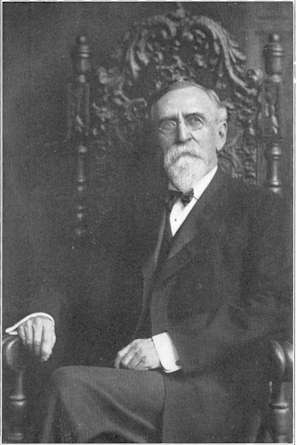
Dr. Eug�ne Beauharnais NASH, one of the Homeopathy Masters was born on March 8, 1838.He graduated from Cleveland Homeopathic in 1874. He taught at the New York Homeopathic Medical College and was President of the International Hahnemannian Association in 1903. He had “a fine tenor voice” that led the choir at Methodist meetings. He wrote the excellent book Leaders in Hom�opathic Therapeutics (1898) as well as Leaders for the Use of Sulphur.
Dr. William Boericke
(1849-1929, US)
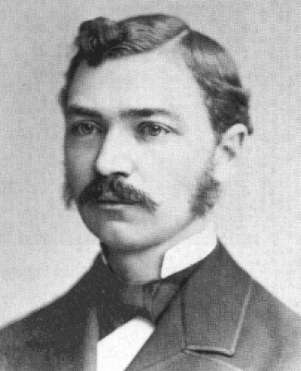
Eminent U.S. homeopath, William Boericke, one of the Homeopathy Masters was born in Austria, on November 26, 1849. He studied for one year at the Vienna Medical School, before immigrating to the United States and settling in Ohio.
He graduated from the Hahnemann Medical College in Philadelphia in 1880. Soon afterwards he moved to San Francisco where he worked as a homoeopath for more than fifty years.
He was co-founder of the Pacific Homoeopathic Medical College of San Francisco and Hahnemann Hospital in 1881. This was incorporated into the University of California, where he became the first professor of Homoeopathic Materia Medica and Therapeutics, a post he held for thirty years.
In 1901 he published his Hom�opathic Materia Medica. It went through nine editions ; his brother Oscar added a repertory to the book in 1906.
Dr. John Henry Clarke
(1853-1931, England)

Dr. John Henry Clarke, one of the Homeopathy Masters passed on to the Great Beyond on Tuesday, November 24, 1931, after a life of extraordinary devotion and usefulness to Homoeopathy.
His memory will live on imperishable in every quarter of the globe through his written words.
Anyone who had met Clarke but a few times, even only once, must have been impressed with the feeling of an exceptional human being, a forceful personality, a man apart.
He was literally a man apart, as he took his work and his mission so seriously that he gave himself very little time to mix with others.
Perhaps, also, there were very few with whom he felt in harmony.
He was a prodigious worker, as his published works testify, to say nothing of the hosts of private patients from all parts of the world.
He was editor of The Homeopathic World for altogether twenty-nine years.
He was indeed an outstanding character, and if one can compare him with another, it is with him who was probably the greatest homeopath that the United States has produced Dr. James Tyler Kent.
They had the same forcible way of expressing themselves combined with an inherent retiring nature, the same intolerance of anything second-rate, especially as relating to their beloved system of therapeutics, the same scorn and contempt for time-servers.
And each gave to the world of Homeopathy the greatest and most valuable book that their respective countries have produced, indeed, in our opinion, the two most indispensable works written since the days of Hahnemann – the Dictionary of Materia Medica and the Repertory of Materia Medica.
Clarke is not dead.
How can a man whose work is, and always will be, a continual source of inspiration to thousands-how can such a man ever die ? �
Harold Fergie WOODS
The Homoeopathic World, January 1932.
Dr. Cyrus Maxwell Boger
(1861-1935, US)
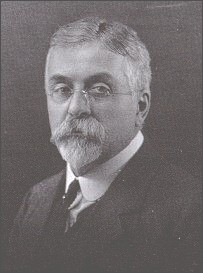
Cyrus Maxwell Boger, a Homeopathy Master was born on May 13, 1861 in western Pennsylvania, the son of Cyrus and Isabelle Maxwell Boger.
He received his elementary education in the public schools of Lebanon, Pa., then graduated in pharmacy from the Philadelphia College of Pharmacy and later in medicine from Hahnemann Medical College of Philadelphia. He settled in Parkersburg, W. Va., in 1888 where a long and very large practise was his, patients consulting him from neighboring states and from distant states and countries.
His ambition was to devote all his time to teaching and writing but he never reached the point of giving up his practise. However, he frequently lectured before scientific audiences at the Pulte Medical College in Cincinnati and was a teacher of philosophy, materia medica, and repertory study in the American Foundation for Homoeopathy Postgraduate School from 1924 until his death.
Boger, who was a german scholar, brought B�nninghausen’s Characteristics and Repertory into the English Language in 1905.
He was married three times. A daughter of the first marriage died quite young. The second marriage brought him four sons and five daughters. His third wife, Anna M. Boger, was his secretary and constant helper.
He died on September 2, 1935, aged 74, from food-poisoning after eating a tin of home-preserved tomatoes.
He was a devoted follower of the Boenninghausen method of a repertory study, as all his published works show.
Here is a list of his publications: Boenninghausen’s Characteristics and Repertory
Boenninghausen’s Antipsorics
Boger’s Diphtheria, (The Homoeopathic Therapeutics of)
A Synoptic Key of the Materia Medica, 1915
General Analysis with Card Index, 1931
Samarskite-A Proving
The Times which characterize the Appearance and Aggravation of the Symptoms and their Remedies
Dr. Elisabeth Wright Hubbard
(1896-1967, US)
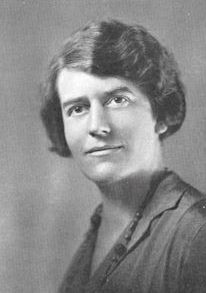
Eminent U.S. homeopath, Dr. Elisabeth Wright Hubbard, a Homeopathy Master was one of the most brilliant homoeopaths of the twentieth century.
Elizabeth Wright Hubbard qualified in medicine in 1921 at Columbia University School of Physicians and Surgeons and interned at Bellevue Hospital, New York. From there she went on to study homoeopathy for two years under Dr Pierre Schmidt of Geneva, returning to the United States to pursue a career that brought her international acclaim and affection. She was the first woman to be elected President of the American Institute of Homeopathy. She also filled an important and influential role over many years as Editor of the ‘Homoeopathic Recorder’ and subsequently as Editor of the ‘Journal of the American Institute of Homeopathy’.


